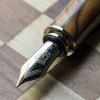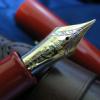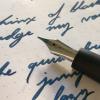Search the Community
Showing results for tags 'royale'.
-
Namiki Yukari Royale versus Pilot Custom 845 http://farm8.staticflickr.com/7346/11918876405_a4b358c5a4_b.jpg Introducing the Namiki Yukari Royale in Black Urushi (top) and the Pilot Custom 845 (bottom). Both pens are resting on a Nakaya three-pen pillow in Kuro Tamenuri Urushi on top of a Midori p...
- 45 replies
-

A Review Of Namiki Yukari Royale In Vermillion(Red) Urushi
sannidh posted a topic in Fountain Pen Reviews
A wait longer than words can define, an Emperor in Red singing a glistening rhapsody, and then a Yukari dazzling in Royale Red glory. The pens, an encompassment of elegance of words, combined with precision of maki-e artisans have been unsurpassed. The Yukari did anxiously waited in my hands to have... -
Hello all, hope you and yours are doing well during these odd times. I am reevaluating my ‘desirables’ list of pricier fountain pens and attempting to narrow down my choices a good deal. For example, I’ve recently removed the Montblanc l’Aubrac after finally getting a chance to try one and being d...
-
So its finally here! Namiki Royale, Vermilion Urushi Warning: Photo Heavy - I personally love when reviews have tons of photos so just returning the favor! This pen fulfilled so many of my most desirable traits in a pen, that I found myself in need of writing a review on FPN for others to s...




